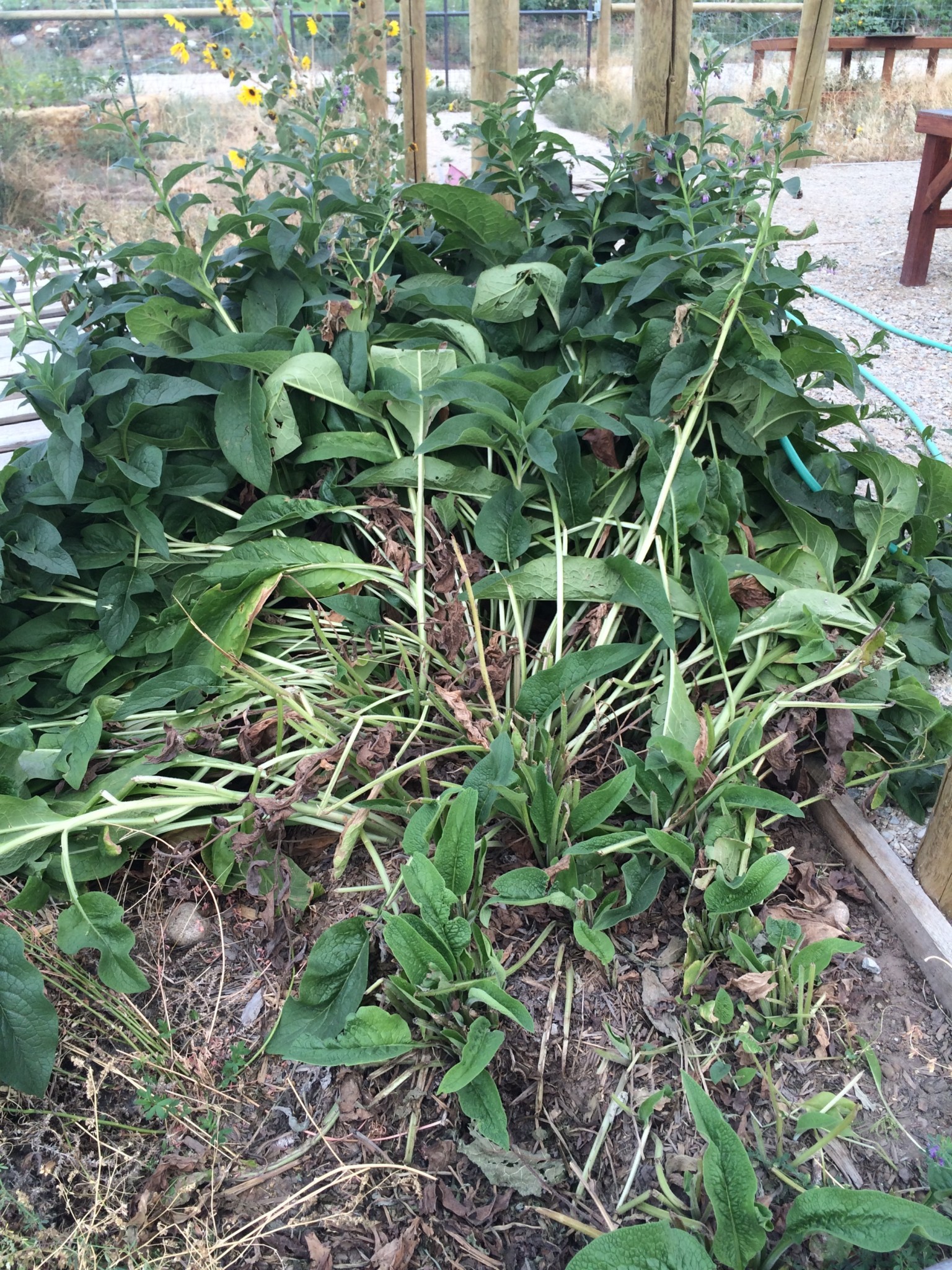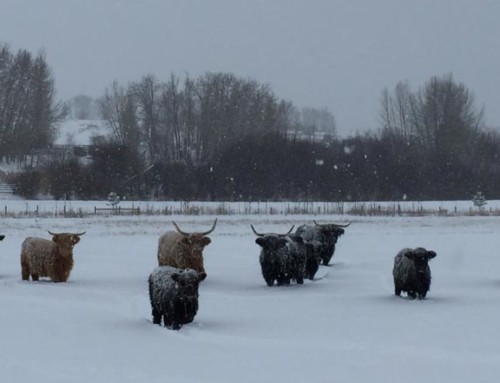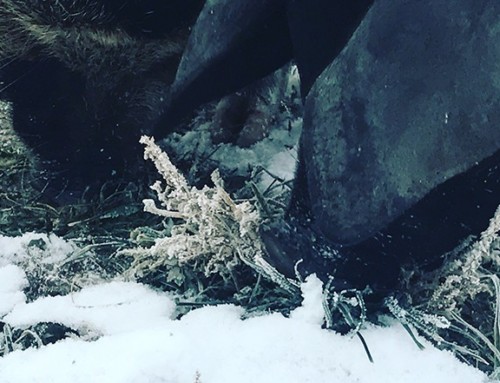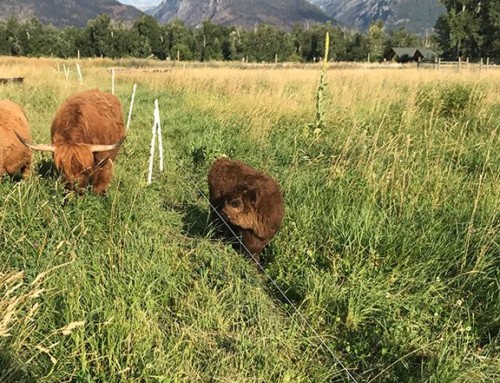In our regenerative, permaculture designed system, we have planted a great number and diversity of plants for a variety of purposes and functions on this in-process Permaculture Farmstead here at ABC acres. One such plant being comfrey, which is nearly a must-have for any permaculture property for its many uses and benefits. Comfrey dynamically accumulates minerals from the subsoil with its long, prolific taproots, and stores them in its leaves and stems. We use it for chop and drop mulching to good effect in our gardens and tree systems, but we are also beginning to use it to make a fermented concoction known as comfrey fertilizer tea.
Due to its dynamically accumulating nature, comfrey has tremendous soil-enriching properties that can be extended and spread through this process of “tea-making.” Comfrey leaves contain good levels of nitrogen, in addition to the potassium, phosphorus, calcium, iron, magnesium, and copper that the roots accumulate from the subsoils. You may very well notice that the nitrogen, potassium, and phosphorous contained in comfrey are the very same “N-P-K,” that adorns labels of synthetic chemical fertilizers. In addition to these basic nutrients, the trace minerals further enrich soils and the plants that grow in them, all from a plant that can be harvested from 4-5 times a year! This means even a relatively small comfrey patch can supply the fertility requirements for a small homestead. The tea is made easily; simply cut from the comfrey, place in a water-tight container, and covered with water to let steep for 3-6 weeks. Covering the container with a lid is a wise move, as the fermenting comfrey can get a bit stinky!
The end result, once the liquid is strained off from the sludgy solids, is a fertility-rich liquid fertilizer that is all-natural and homegrown. After diluting it with 1 part comfrey tea to 5-10 parts water, it can be poured or sprayed to fertilize vegetable gardens, orchards, berry bushes, pastures, and field crops. It is one less external input for a production system, and makes for a more resilient and regenerative property as well.
Blessings,
Grant







